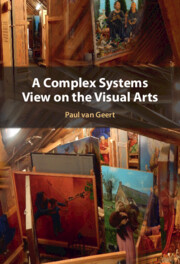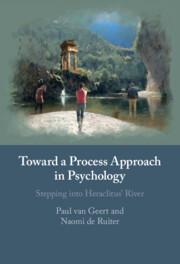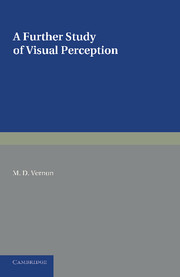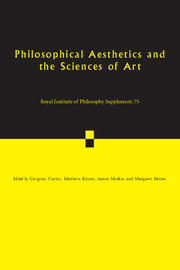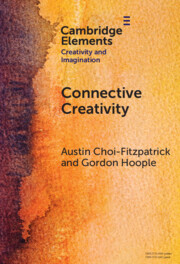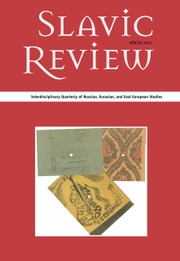A Complex Systems View on the Visual Arts
This book presents a comprehensive and unexpected approach to the visual arts, grounded in the theories of complexity and dynamical systems. Paul van Geert shows how complexity and dynamical systems theories, originally developed in mathematics and physics, offer a novel perspective through which to view the visual arts. Diverse aspects of visual arts as a practice, profession, and historical framework are covered. A key focus lies in the unique characteristics of complex systems: feedback loops bridging short- to long-term temporal scales, self-organizing into creative emergent properties; dynamics which may be applied to a wide range of topics. By synthesizing theory and empirical evidence from diverse fields including philosophy, psychology, sociology, art history, and economics, this pioneering work demonstrates the utility of simulation models in deciphering a surprisingly wide range of phenomena such as artistic (super)stardom and shifts within art historical paradigms.
- Harnesses the framework of complex dynamic systems to offer a novel account of existing controversies, such as defining art
- Integrates empirical evidence from diverse fields including art historiography, psychology, sociology, and economics
- Explains concepts of complexity science, such as self-organization, emergence, and attractors with examples from the arts
Reviews & endorsements
‘The book is congenial to the universe of the arts, to creativity and improvisation. Paul van Geert provides an extremely revelatory and inspiring account - both for the hobby expert who goes to openings every week and to the art historian who will find an orderly universe that permits a systematic and piecemeal walk-through history.’ Ingar Brinck, Professor, Department of Philosophy and Cognitive Science, Lund University, Sweden
‘With this remarkable publication van Geert brings a lifetime of expertise in understanding human experience through dynamical systems to a re-description of visual art. Considering dynamical processes allows him not only to give a systematic exposition but also create his own, highly impressive, textual system to sit alongside the artworld.’ Francis Halsall, Lecturer, School of Visual Culture, National College of Art and Design, Ireland
‘Art is humanity’s greatest means for prompting nonlinear, complex, dynamic modes of experience. However, most artists and complex systems scientists remain unfamiliar with the others’ fields. Fortunately, Paul van Geert has written a powerful book that entangles the most intensive aspects of art, aesthetics, and complexity into one volume. A classic in the making.’ Jason Hoelscher, artist, educator, and author of Art as Information Ecology: Artworks, Artworlds, and Complex Systems Aesthetics
‘Offering rigorous analysis and fresh insights, this groundbreaking work applies dynamic systems theory to works of art and the global art market. Moving beyond traditional philosophical and art historical descriptions of the artworld, it develops an account of individual artworks and artistic movements as emergent properties of complex socio-cultural processes.’ Ryan Wittingslow, Associate Professor of Philosophy, University of Groningen, Netherlands
‘In this profound new book, van Geert incisively frames human artistic endeavor as processes of complex dynamic systems operating at multiple timescales and levels of organization. What emerges is a richly textured exploration through the thoroughly intertwined worlds of art and science - and a must-read for denizens of both worlds.’ David C. Witherington, Associate Professor, University of New Mexico, USA
‘Keen analysis and a wealth of examples offer a spectacular insight into how a complex dynamic systems view enables a (non-normative) meta perspective on art and art history as nonlinear, cross-cultural and transhistorical entanglements. Overcoming national confinements and traditional taxonomies it allows for a truly global art study. A thought-provoking must-read.’ Kitty Zijlmans, Professor Emeritus of World Art Studies, Leiden University, Netherlands
Product details
April 2025Hardback
9781009378963
474 pages
236 × 160 × 30 mm
0.844kg
Available
Table of Contents
- Part I. Art as a Complex Process:
- 1. A nonlinear affordance for exploration
- 2. Art and Process: definitions and ontologies
- 3. From processes to complex dynamic systems
- 4. Describing art through the lens of Complex Dynamic Systems
- 5. Art in a complex, dynamic web of functions
- Part II. Entangled Timescales of Visual Arts:
- 6. Timescales of art as interacting processes
- 7. Timescales of artistic activity: creation and experience of art
- 8. Timescales of artistic careers
- 9. The timescale of excellence and celebrity
- 10. The timescale of art history
- 11. The timescale of deep history and of human evolution
- Part III. Understanding Art Through Dynamic Models:
- 12. Dynamics of cultural and market value
- 13. Dynamic modeling of the emergence of excellence in the arts
- 14. Modeling long-term trends and discontinuities in art.

